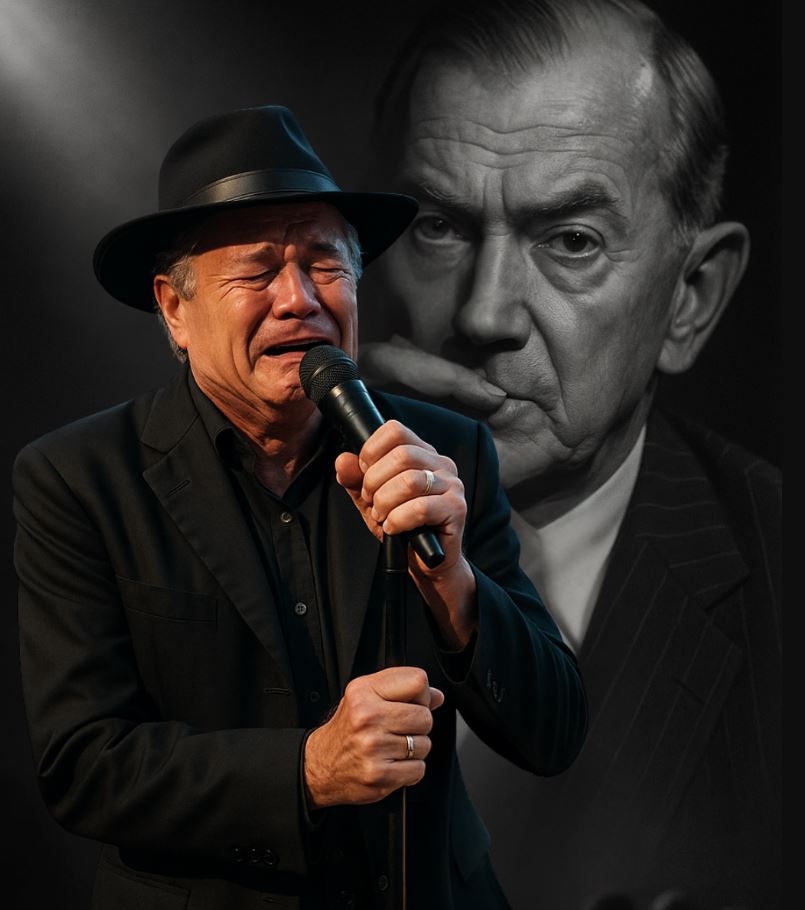
In a world saturated with spectacle and noise, we are occasionally gifted moments of such profound and quiet power that they command our collective attention, reminding us of the deep, connective tissues that bind all forms of artistry. We witnessed such a moment when Micky Dolenz, the beloved and final surviving member of The Monkees, took to a stage not with roaring guitars and psychedelic fanfare, but with the hushed reverence of a final, tender goodbye. The recipient of this honor was not a fellow musician, but a “brother of the screen,” the immensely talented, Oscar-nominated actor Graham Greene. What transpired was an elegy, a rare and beautiful confluence of music and film, and a testament to the enduring power of respect shared between two masters of their craft.
A Stage of Shadows and a Single Flame
The performance began not with an overture, but with a palpable stillness. As Micky Dolenz emerged from the wings, the stage was bathed in an intimate dimness, a deliberate choice that stripped away all pretense. There was no bombastic light show, no sprawling band, no grand production. Instead, our focus was drawn to two solitary elements: a lone, flickering candle casting a gentle glow, and Dolenz himself, his presence a poignant silhouette against the quiet dark. Beside him, a quiet piano stood ready, not for a rock-and-roll spectacle, but for a delicate, heart-wrenching ballad. This minimalist setting was a powerful statement, signaling that this was not a concert in the traditional sense. It was a vigil, an intimate space carved out of the world for the sole purpose of remembrance and honor.
Honoring a Cinematic Titan: The Legacy of Graham Greene
Projected in stark black-and-white was a photograph of the man of the hour: Graham Greene. To understand the depth of Dolenz’s tribute, we must first appreciate the magnitude of Greene’s contribution to the world of cinema. An actor of immense talent and gravitas, Greene gave the world one of its most unforgettable performances as Kicking Bird in the epic 1990 film Dances with Wolves. This role, a masterful portrayal of wisdom, strength, and cultural dignity, rightfully earned him an Academy Award nomination and etched his name into the annals of film history. His career was a tapestry of powerful roles that consistently brought depth and authenticity to the screen, challenging stereotypes and paving the way for indigenous actors in a landscape that had for too long overlooked them. He was, in every sense, a titan, and the silent, reverent photograph on that stage spoke volumes of a legacy that transcends the silver screen.
The Last Monkee’s Voice: A Sound of Pure Emotion
When Micky Dolenz, the last living Monkee, approached the microphone, he carried with him the weight of a generation. He whispered, “This one’s for Graham,” and the words hung in the air, thick with emotion. The voice that followed was not the youthful, exuberant sound of “Last Train to Clarksville” or “Daydream Believer.” It was a voice weathered by time, rich with the patina of a life lived, of friendships cherished, and of losses mourned. Accompanied only by the sparse, melancholic notes of the piano, his song was a raw and unfiltered expression of grief and admiration. We learned that in this moment of pure, unadorned artistry, the power of a performance is not measured in volume or complexity, but in its capacity to convey genuine human emotion. This was Dolenz at his most vulnerable, a living legend paying homage to another, using the simple, profound tool of his voice.
A Farewell That Transcended Worlds
The reaction from those privileged to be in attendance was perhaps the most telling detail of the evening. There was no roaring applause, no whoops of excitement. Instead, as the final notes faded into the silence, the room was filled with the soft sound of weeping. The audience was not a passive observer; they became participants in a shared moment of catharsis. They understood instinctively that they were witnessing something sacred—a final bow from one world of art to another. It was a bridge between the vibrant, revolutionary music of the 1960s and the epic, narrative power of cinema. This tribute was a poignant acknowledgment that true artistry speaks a universal language, creating bonds that time, distance, and even death cannot sever. It was one generation of music saying a final, heartfelt farewell to a brother of the screen, a powerful and unforgettable union of art and memory.